Scattered around San Francisco are a total of 177 large cisterns buried beneath the streets. Their presence is visible at many intersections in the shape of large brick circles embedded in the pavement. These cisterns hold the city’s emergency water supply, to be used should the city’s domestic water supply fail in the event of a nasty fire.
San Francisco is the only city in the world to have such a system. The cisterns form an integral part of the city’s Auxiliary Water Supply System that consist—aside from the cisterns—water reservoirs, pump stations, suction connections and fireboats, and was designed to help firefighters deal with emergencies.
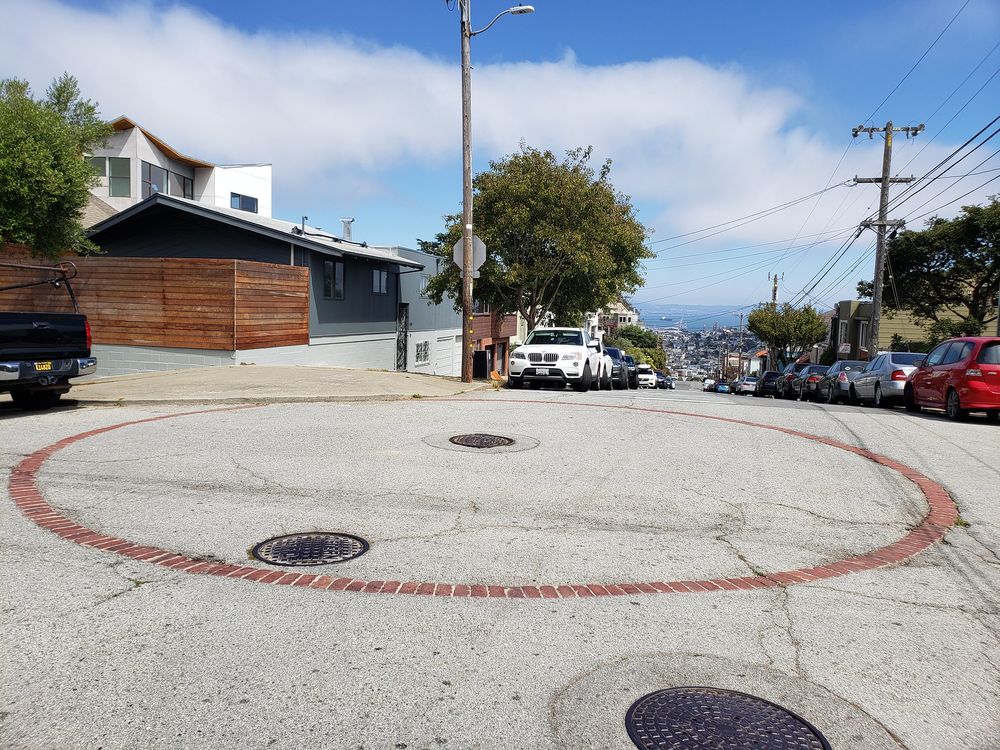
A circle of bricks marking the position of a subterranean cistern. Photo: christeli_sf/Flickr
The AWSS was conceived and planned in response to the failure of the existing water system during the devastating fires that ravaged San Francisco following the infamous 1906 earthquake. Within three days of the earthquake, fires destroyed approximately 25,000 buildings on 490 city blocks. Many fires were caused by ruptured gas mains, but many others were deliberately started by owners of destroyed homes so that they could claim insurance on their properties, because their insurance policies covered damage from fires but not from earthquake. Fire became the single most destructive force in the city, with some estimates putting the loss due to fires as high as 90 percent of the total destruction.
San Francisco's early settlers were no stranger to fires. A city that rose out of the gold rush was a veritable tinderbox with rickety wooden houses, tents, the hulks of ships, and anything that afforded protection. Within the first two or three years of its history, there were six major fires, the first in January 1949 when the Shades Hotel burned to the ground. A few months later, a ship went up in flames as it was preparing to sail. Towards the end of the same year, another fire began in the middle of the eastern side of the Plaza, that consumed nearly all that side of the square. This was the first great fire which devastated San Francisco.


Fire in San Francisco Bay, 1856. Oil on canvas, by Charles Christian Nahl and Hugo Wilhelm Nahl
Six months later on May 4, 1850, a fire ravaged three blocks of the most valuable buildings in the city. Following the fire, a 12,000-gallon cistern, one of many to follow, was constructed in Portsmouth Square. Artesian wells were also dug in various parts of the city and an ordinance was passed ordering all house-holders to have six water buckets kept in readiness for fires. But these preventive measures were not taken in time. A month later, a third fire broke out from a defective chimney in a bakery and the resulting fires consumed all the blocks between Clay, California and Kearny streets to the water.
Fires became a repeated occurrence in the city, breaking out every two to three months. On May 4, 1851, exactly a year after the second great fire, a catastrophic conflagration destroyed as much as three-quarters of San Francisco. It was the most devastation fire to date. Hardly six months passed when yet another fire started, completely gutting ten blocks and partially destroying another six. Wary of frequent disasters, people began to build houses with solid bricks, some two to three feet thick, to make them fireproof. But these superior constructions were confined to the central business section, while on the fringes and in the residential sections, the buildings continued to be of wood frame construction.

San Francisco Mission District burning in the aftermath of the San Francisco Earthquake of 1906. Photo: Chadwick, H. D/Wikimedia Commons
In response to the fires, the city installed a modern water supply system with over four thousand hydrants, that soon replaced the old time fire cisterns. Then the ground shook on April 18, 1906, and the city’s water pipes sprouted leaks everywhere. Consequently, the fire department lost water pressure at the same time that busted gas lines sparked a conflagration. Eventually, it was water from these cisterns that helped firefighters save many neighborhoods from complete destruction.
Having learned their value, the city ordered the creation of over 150 new cisterns as part of the Auxiliary Water Supply System, which also included a network of pipelines built exclusively for firefighting that was completely separated from the regular water supply pipelines. The strategically located cisterns have capacities ranging from 75,000 to over 200,000 gallons each, and together they are able to store approximately 11 million gallons of water citywide. These cisterns are standalone reservoirs and are not connected to the system’s water supply. Their presence is indicated by a circle of bricks with two manholes, the covers of which are embossed with CISTERN and S.F.F.D (San Francisco Fire Department).
Since the 1906 earthquake more than a century ago, the cisterns have not been used. But they are still down there and regularly maintained ready to save the city when the next calamity strikes.
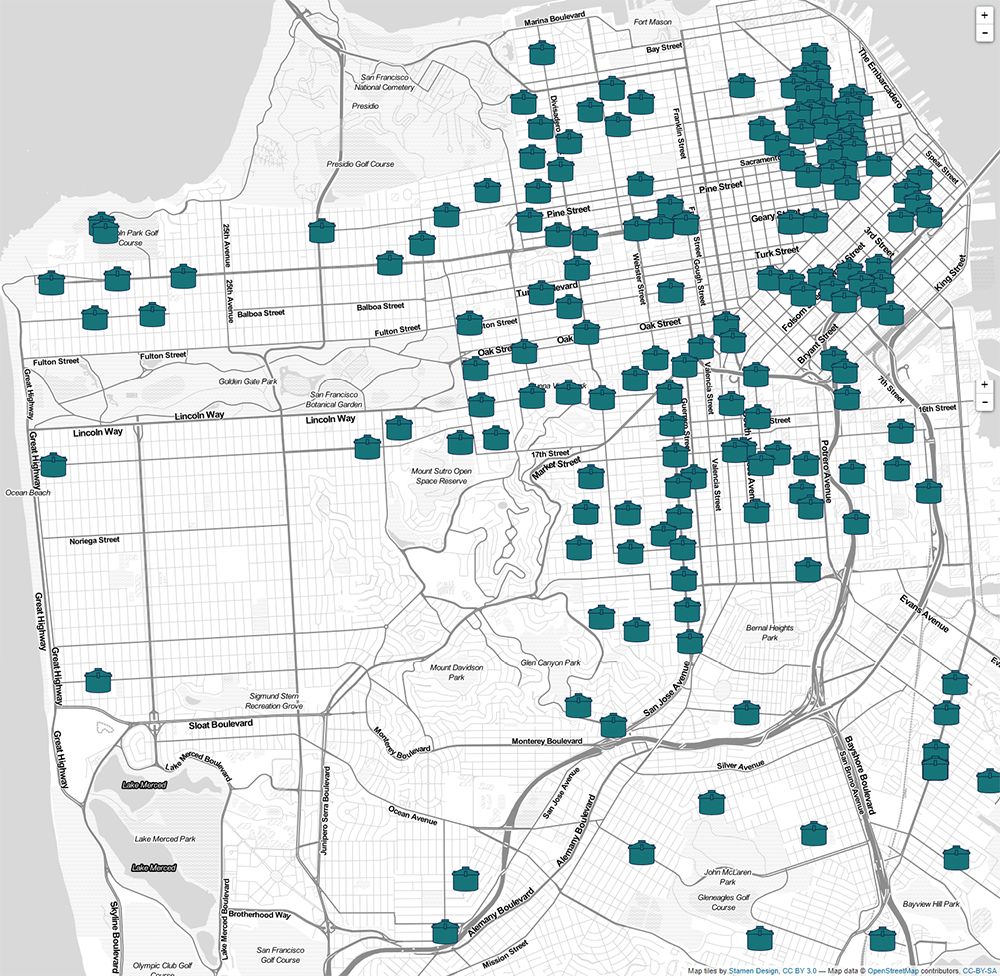
Map of San Francisco’s cisterns by Scott Kildall
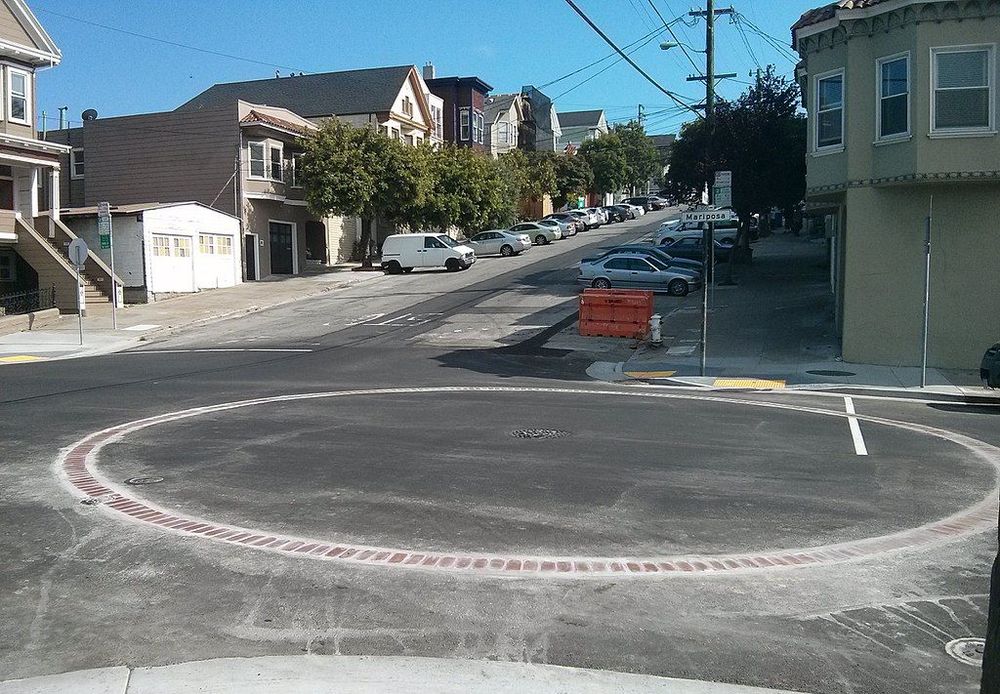
Water cistern in San Francisco, California, in the Potrero Hill neighborhood, at the intersection of Mariposa and Missouri Streets. Photo: Mark Hogan/Wikimedia Commons
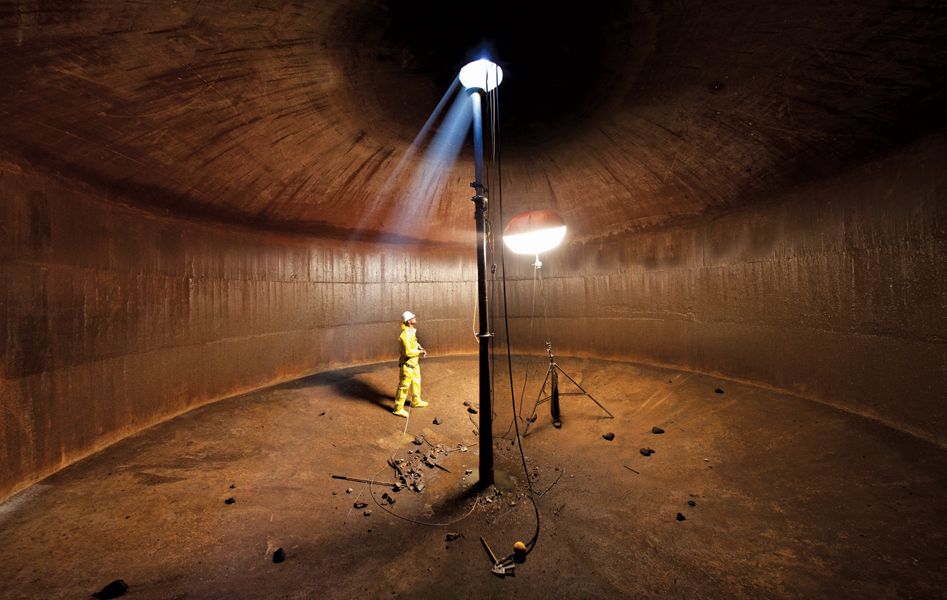
Inside a cistern in the Mission District, San Francisco, California. Photo: Robin Scheswohl/Wikimedia Commons
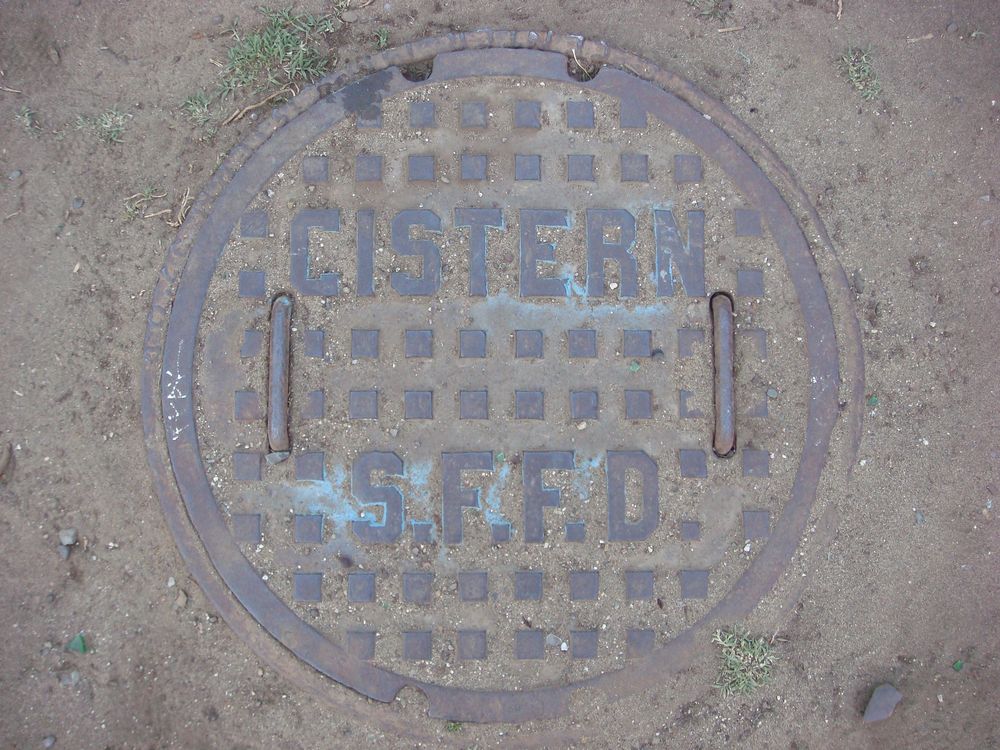
A manhole cover over a cistern in San Francisco. Photo: Nick Sherman/Flickr
References:
# Early History of the San Francisco Fire Department, www.sfmuseum.net
# San Francisco Fire Department historical review, 1849-1967
# Thomas K. Pendergast, Auxiliary Water Supply System Expansion Abandoned, FoundSF



Comments
Post a Comment